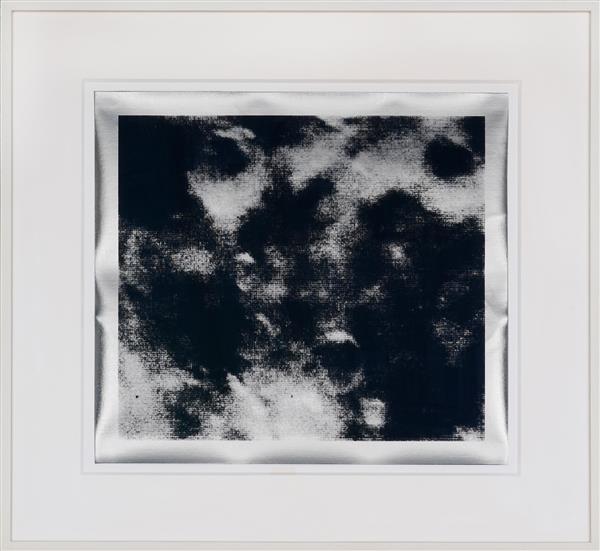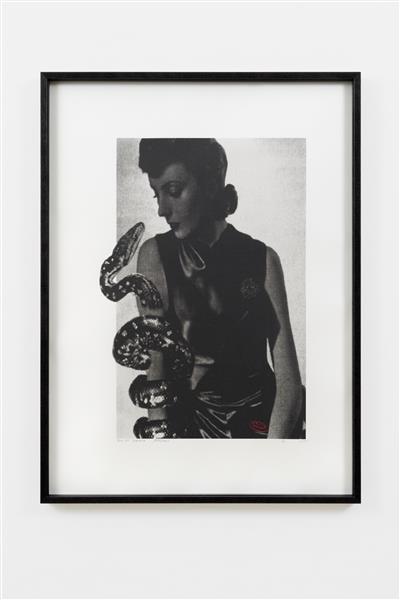From the Library of...
Matthew Brannon
silkscreen on paper
81.3 × 61 cm (framed)
2006
Acquisition 2007
Inv. No. 0158
The motif of sharply contoured knives of different sizes has been considered Matthew Brannon’s trademark for a long time. This kind of drastic imagery, which caused irritation, can hardly be found in his recent works. His current compositions with their pictorial language reminiscent of the 1960s’ advertising aesthetics rather breathe a lasting elegance. Flat elements from everyday life in appealing colors are assembled to new poetic compositions on posters. Coffee cups, banana skins, wristwatches, and packs of cigarettes, for example, are lovingly arranged to still lifes. Yet, Brannon’s works are anything but innocent. He plays with decorations and smooth surfaces to hint at abysmal things on a different level. Frequently, short texts accompany his works, be it as titles or positioned directly next to the rendered motifs. These texts powerfully thwart the pleasant representations. They deal with sexual violence, the battle of the sexes, with excesses, and injuries – with all the fallibilities of human existence.
Nothing of all this seems to be contained in the work of the evn collection. That the silk screen print has been executed in a technically perfect manner on exquisite paper may be regarded as typical of Matthew Brannon. The title hints at an ex libris stamp, and the pigeon also fits into this context. Opening the door to the subconscious step by step like a psychoanalyst, Brannon has repeatedly used this bird. He also did so for the silk screen print Adult Education (2007), which features a longer text besides several dove silhouettes.1 The lines describe a kind of journey starting with the page of a book and ending in a place where several corpses have been found. This recalls the experiments undertaken by the psychologist and behaviorist B. F. Skinner, who trained pigeons to guide missiles to specific targets and whose Skinner Box became synonymous for an operant conditioning chamber. The desired behavior is reinforced, the unwanted behavior is extinguished. Such mechanisms of positive reinforcement are also used in advertising whose formalism Matthew Brannon draws on again and again. He “rewards” us with aesthetic pictures, yet simultaneously trains our attention, rousing unease by letting us take a look behind the scenes.
Heike Maier-Rieper, 2011 (translation: Wolfgang Astelbauer)
1) “It’s abstract / it’s totally abstract / I copied it / I stole it from you / I ripped the page right out of the book / word for word / you weren’t doing much with it anyway / uh... / when we pull off we make a right / then it’s about five miles before we turn left onto the dirt road / you should see it on the right / the place where the bodies were found.” From: Martha Schwendener, “Material Muse for Some Strange Bedfellows,” in: The New York Times, April 6, 2007, E34.
Continue readingExhibitions
Wallpaper #5, evn sammlung, Maria Enzersdorf, 2022
Publications
evn collection. 2006–2011, Cologne 2011, p. 84 f

